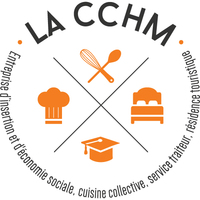Find Community and Social Resources
Find services by topic
Collective Kitchens
"A collective kitchen is a small group of people who come together to pool their time, money and skills in order to prepare low-cost, healthy and tasty dishes that they share and bring home." [1]
|
Find services in the Greater Montréal |
Figures on collective kitchens in Québec |
|---|---|
|
How does it work?
Collective kitchens take place in 4 separate steps:
- Planning: participants choose recipes, a number of servings and calculate a budget.
- Purchases: the ingredients are bought.
- Cooking day: participants cook the meals together.
- Evaluation: participants assess the meeting process.
What are the types of collective kitchens?
Collective kitchens now exist in various forms in order to meet the needs of clients. Here are exemples:
- Multi-ethnic: for sharing culinary traditions from around the world.
- Vegetarian: for vegetarians and people who want to learn about vegetarianism.
- Baby food: for parents who want to cook homemade purees for their children.
- Health: for people with health problems such as diabetes, hypertension or heart problems who want meals that correspond to their diet.
- Lean: for those who want to lose weight.
- Training and workshops: some organizations offer varied occasional culinary training and workshops.
Each organization has free rein when it comes to decisions regarding the number of servings, the number of participants, the category of participants (like seniors, families or immigrants), the number of meetings per month, the cost of servings, etc.
How do I subscribe?
Collective kitchens are open to all interested people. This being said, the demand may be high and some organizations may have a waiting list. Furthermore, some organizations favour people on a low income and those who live in their area.
Interested people can contact the nearest organization directly. They will receive information on availabilities, schedule and costs.
How much does it cost?
Prices vary from one organization to another:
- Some organizations ask for a fixed price.
- Others charge a cost per serving (generally between $1 and $3).
- Some request that people subscribe as members: you then need to pay for the annual or monthly membership card.
Why subscribe?
In addition to allowing members to cook healthy meals at low costs, collective kitchens serve to break the isolation, to form friendships, share knowledge, build confidence, get involved and participate in collective projects and more.
Some backgroundIn 1982, in the Hochelaga-Maisonneuve neighbourhood, Jacynthe and Sylvie Ouellette, together with one of their neighbors, decided to start making collective food purchases and to prepare nutritious meals once a month. Workers at Carrefour familial d’Hochelaga heard about their initiative and asked Jacynthe Ouellette if they would share the experience with other women in the neighbourhood. After a few meetings at Carrefour familial d’Hochelaga and at Maison des femmes La Marie-Debout, several women expressed interest in starting a collective kitchen. That was the start of a new popular practice that quickly spread throughout the province. In 1990, over 100 collective kitchens were in operation in Québec, a number that led to the creation of the Regroupement des cuisines collectives du Québec the same year. |
CCHM was the first collective kitchen to be founded in Québec |
[1, 2] Regroupement des cuisines collectives du Québec, online : http://www.rccq.org/fr/a-propos/quest-ce-quune-cuisine-collective/









